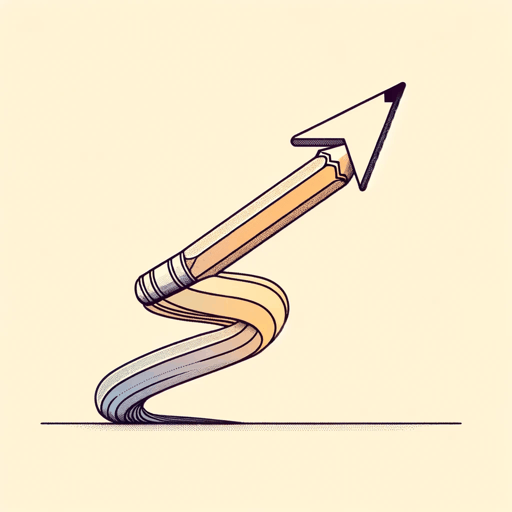41 pages • 1 hour read
Austin KleonSteal Like an Artist: 10 Things Nobody Told You About Being Creative
Nonfiction | Book | Adult | Published in 2012A modern alternative to SparkNotes and CliffsNotes, SuperSummary offers high-quality Study Guides with detailed chapter summaries and analysis of major themes, characters, and more.
Summary and Study Guide
Overview
Steal Like an Artist: 10 Things Nobody Told You About Being Creative is a creative self-help book by the American author and artist Austin Kleon. Steal Like an Artist is Kleon’s second book, published in 2012. His first book, Newspaper Blackout (2010), is a poetry collection made by redacting lines of a newspaper with permanent marker to leave words and phrases. Steal Like an Artist is the first book in a trilogy of self-help books by Kleon about Creativity in the Digital Age. It is followed by 2014’s Show Your Work!: 10 Ways to Share Your Creativity and Get Discovered, and 2019’s Keep Going: 10 Ways to Stay Creative in Good Times and Bad. All three are self-help books—books that offer emotional or practical insight, instruction, or support. Steal Like an Artist inspired a journal published in 2015 called The Steal Like an Artist Journal: A Notebook for Creative Kleptomaniacs, which contains prompts, quotes, and exercises that help readers implement the advice in Steal Like an Artist.
Steal Like an Artist and its sequels are self-help books designed to help people with matters of creativity. However, they are also “creative” self-help books in the sense that Kleon himself implements a variety of creative practices to produce the books. The titles and main fonts of the book are hand drawn by Kleon, as are many doodles, diagrams, and messages inside the book. It is filled with personal photos that peripherally relate to a given chapter’s written content. The chapters also intersperse relevant quotes from famous creatives across a range of fields. Kleon thus demonstrates how a variety of personal and creative modalities can coalesce in a single creative endeavor. These strategies foreshadow some of the issues the book deals with, like maintaining a robust diversity of hobbies and side projects, balancing work and play and positioning yourself in a creative lineage.
Kleon was born in Circleville, Ohio, in 1983. He attended Miami University and pursued a career in information management, web design, and copywriting. He also undertook artistic and writing projects, disseminating these through blogging. While writing and publishing his 2010 and 2012 books, Kleon continued his career, gaining professional experience that has informed his subsequent books’ advice for those pursuing creative endeavors, including practical considerations such as financial stability and security, and how to work creatively in the digital age. Steal Like an Artist was a New York Times Bestseller, an Amazon Top Best-Selling Book of 2012, a Brain Pickings Best Art Books of 2012, and a Goodreads Choice in Nonfiction for 2012. Following his literary success, Kleon has become a full-time writer, speaker, and thought leader.
This guide refers to the 2012 Workman Publishing hardback edition.
Content Warning: The source text and guide refer to drug and alcohol use. The guide discusses mental health and suicide.
Summary
Steal Like an Artist is broken into 10 chapters, each of which addresses a different piece of advice or approach on how to maintain a creative practice in the digital age. These are ordered so that they form grouped ideas and create a structured flow through the book.
In the first three chapters, Kleon seeks to reorient how people conceptualize the role of the artist and the inspirations for making art. In Chapter 1, Kleon encourages people to imagine Art as a Genealogy of Ideas, and themselves as part of a creative lineage. Artists should “steal” from their inspirations. Chapter 2 describes how artists can go from copying their heroes to “emulating” them, or using their work as a jumping off point to create something new. Artist should copy things that spark joy or passion within them. Chapter 3 describes how artists should move away from writing what they know and toward what they love.
The next two chapters offer advice on The Difference Between Work and Play. Chapter 4 suggests that aspiring creatives “bring [their] body into [their] work” (54) by integrating analog tools into their creative practice where possible, making work feel more like play. Chapter 5 encourages artists to have both side projects and hobbies. Side projects feel more like play because they don’t have the pressure of main projects, while hobbies are regenerative creative practices undertaken solely for happiness, rather than money or recognition.
Chapters 6, 7, and 8 offer more focused advice for Creativity in the Digital Age. Chapter 6 urges artists to enjoy the freedom that comes with obscurity and delineates how artists can use the internet to grow an audience and creative community. Chapter 7 outlines how the internet allows artists geographical freedom by creating a community they can connect to from wherever they choose to live. Chapter 8 explores how artists can conduct themselves on the internet with discretion and positivity. Since nothing that is put online truly vanishes, Kleon encourages artists to ignore their detractors and say nice things about their heroes or the people they want to be in creative community with.
The last two chapters offer a roundup of practical advice on how to maintain a sustainable, long-term, and individualized creative practice. Chapter 9 gives practical advice on how to be “boring” in a way that aids an artist’s longevity, such as staying out of debt and having a routine. Chapter 10 encourages artists to place whatever restrictions and challenges are appropriate on their creative practice, to provide structure in the age of digital technology and limitless information.

